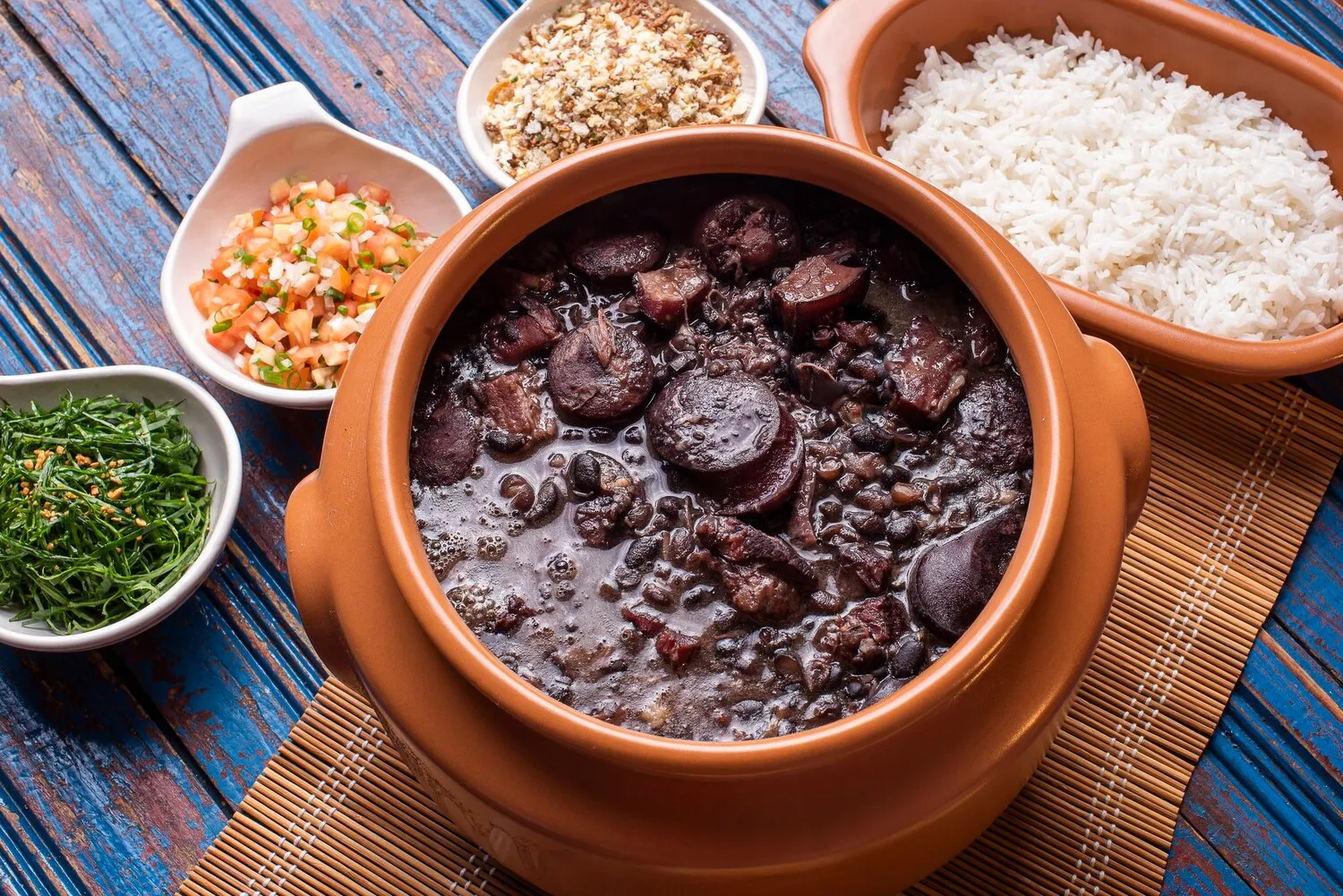
Baião de Dois
A traditional Northeastern Brazilian dish made with rice, beans, cheese, and sometimes meat.
Nutrition Facts
* The % Daily Value (DV) tells you how much a nutrient in a serving of food contributes to a daily diet. 2,000 calories a day is used for general nutrition advice.
Paraíso da Carne do Sol
Baião de Dois originated in the arid Sertão region of Northeastern Brazil. The dish reflects the resourcefulness of the local population, making the most of readily available ingredients like beans, rice, and dried meat due to the harsh climate and limited resources. Indigenous culinary traditions combined with Portuguese influences contributed to its development.
Baião de Dois is deeply ingrained in the culture of Northeastern Brazil, particularly in the states of Ceará, Rio Grande do Norte, Paraíba, and Pernambuco. It represents the resilience and culinary creativity of the region's people and is often associated with family gatherings and celebrations.
Regional Identity
Baião de Dois is a symbol of Northeastern Brazilian identity, showcasing the region's unique culinary heritage and adaptation to its environment. It’s a dish that evokes a strong sense of belonging and regional pride.
Communal Dish
It is often prepared and shared during family meals and festive occasions. The communal nature of the dish reflects the strong sense of community and togetherness prevalent in Northeastern Brazil.
Resourcefulness
The dish embodies the resourcefulness of the people in the Sertão region, demonstrating how they could create a delicious and satisfying meal using readily available ingredients.
Baião de Dois presents a hearty and savory flavor profile, characterized by a harmonious blend of beans, rice, cheese, and often dried or salted meat. The specific flavors vary depending on the region and ingredients used.
The base flavor is a combination of rice and beans, usually 'feijão de corda' (cowpeas). Queijo coalho, a firm, slightly salty cheese grilled or cubed and added to the mixture, contributes a pleasant textural contrast and cheesy flavor. Dried and salted beef (carne de sol or carne seca), if included, adds a salty, savory depth. The dish is typically seasoned with onions, garlic, bell peppers, and cilantro, which provide aromatic and fresh notes. Some variations may incorporate bacon or sausage for additional richness. The overall taste is comforting and filling, with a balance of savory and slightly salty notes.
Bean Selection
Using 'feijão de corda' (cowpeas) is traditional and contributes to the dish's authentic flavor and texture. If unavailable, other types of beans can be substituted, but the result will differ slightly.
Cheese Choice
Queijo coalho is ideal because it doesn't melt easily and adds a slightly salty, firm texture. Halloumi is often cited as a good substitute due to its similar properties, however flavor will differ slightly.
Meat Preparation
If using carne de sol (dried and salted beef), ensure it is properly desalted by soaking it in water for several hours, changing the water frequently. This step is crucial to prevent the dish from being overly salty.
Cooking Technique
Cook the rice and beans together for a more integrated flavor. The beans should be slightly undercooked, as they will finish cooking with the rice. Alternatively, cook the rice in the bean broth for maximum flavor infusion.
Explore additional Traditional Brazilian dishes and restaurants
Explore Traditional BrazilianDiscover top dining spots and culinary experiences in Feira de Santana.
Explore Feira de SantanaLearn more about the food culture, restaurant scene, and culinary heritage of Brazil.
Explore Brazil